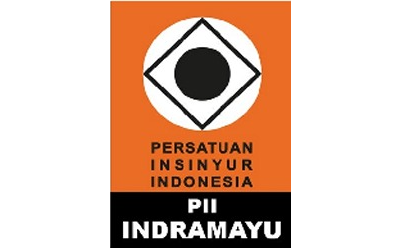OPTIMASI BANDWIDTH MENGGUNAKAN STUB MATCHING IMPEDANSI PADA RANCANG BANGUN ANTENA MONOPOLE ULTRA-WIDEBAND
Abstract
The microstrip monopole antenna design study was developed to support Ultra-Wideband (3.1GHz-10.6 GHz) wireless communication technology. This research aims to obtain a minimalist antenna prototype with the ability to operate in the UWB frequency region. Bandwidth optimization is carried out to increase data speed access capacity in wireless communications. The antenna design has two structures in the conductor layer of the RT DUROID 5880 type substrate material. The surface layer structure is a square patch with a transmission line and an impedance stub. For the bottom layer of the substrate, a structure forms the DGS technique. The simulation method is carried out on the antenna design to obtain parameters, such as bandwidth return loss -10dB is 1.29 (fractional) or 9700MHz (absolute) and bandwidth measurement results (absolute) (12,800 MHz-absolute), VSWR (1:2), input impedance at the 3.8GHz frequency (Zin=31.23Ω-j4.12Ω), and the 13.6GHz frequency (Zin=62.93Ω+j28.4Ω). For radiation polarization, the beam width is 116 degrees and the directional strength (Gain) value is 3.15dBi. The entire antenna has the performance characteristics of operating in the Ultra-Wideband spectrum at C-band, X-band and Ku-band frequencies. Omnidirectional polarization, vertical linear polarization, and low gain and minimalist support communication devices.
Full Text:
PDFReferences
Chang, K. (n.d.). RF and microwave wireless systems.
Corporation, R. (2021). RT/duroid 5880LZ High Frequency Laminates Data Sheet. www.rogerscorp.com
Darsono, M. (2023). Defected Ground Structure Bentuk Persegi Untuk Optimasi Bandwidth Pada Aplikasi Komunikasi Ultra-Wideband. 9.
Darsono, M., & Wijaya, E. (2013). Circularly Polarized Proximity-Fed Microstrip Array Antenna for Micro Satellite. TELKOMNIKA, 11(4), 1693–6930. https://doi.org/10.12928/TELKOMNIKA.v11i4.1247
Federal Communications Commission. (2002). https://transition.fcc.gov/Bureaus/Engineering_Technology/Orders/2002/fcc02048
Huang, Y., & Boyle, K. (n.d.). Antennas : From Theory to Practice.
Hussain, M., Sufian, M. A., Alzaidi, M. S., Naqvi, S. I., Hussain, N., Elkamchouchi, D. H., Sree, M. F. A., & Fatah, S. Y. A. (2023). Bandwidth and Gain Enhancement of a CPW Antenna Using Frequency Selective Surface for UWB Applications. Micromachines, 14(3), 591. https://doi.org/10.3390/mi14030591
Jadhav, J. B. (2013). Bandwidth Enhancement of Compact Monopole Antennas for Application in UWB Communication System. In International Journal of Computer Applications (Vol. 76, Issue 9).
Kai Chang, Inder Bahl, & Vijay Nair. (2002). RF and Microwave Circuit and Component Design for Wireless Systems (Vol. 63). Wiley.
Khandelwal, M. K., Kanaujia, B. K., & Kumar, S. (2017). Defected ground structure: Fundamentals, analysis, and applications in modern wireless trends. In International Journal of Antennas and Propagation (Vol. 2017). Hindawi Limited. https://doi.org/10.1155/2017/2018527
Kumar, A., & Machavaram, K. V. (2013). Microstrip filter with defected ground structure: A close perspective. International Journal of Microwave and Wireless Technologies, 5(5), 589–602. https://doi.org/10.1017/S1759078713000639
Ling, X. (2012). Ultra-Wideband Antenna and Design. In Ultra Wideband - Current Status and Future Trends. InTech. https://doi.org/10.5772/47805
Pozar, D. M. (2012). Impedance Matching and Tuning. 2012, 228–271.
Saidulu, V., Rao, K. S., & Rao, P. V. D. S. (2013). C Omparison the C Haracteristics of C Ircular and S Quare P Atch M Icrostrip a Ntennas
DOI: https://doi.org/10.31884/jtt.v10i2.621
Refbacks
- There are currently no refbacks.
Copyright (c) 2024 JTT (Jurnal Teknologi Terapan)
 Creative Common Attribution-ShareAlike 4.0 International (CC BY-SA 4.0)
Creative Common Attribution-ShareAlike 4.0 International (CC BY-SA 4.0)













